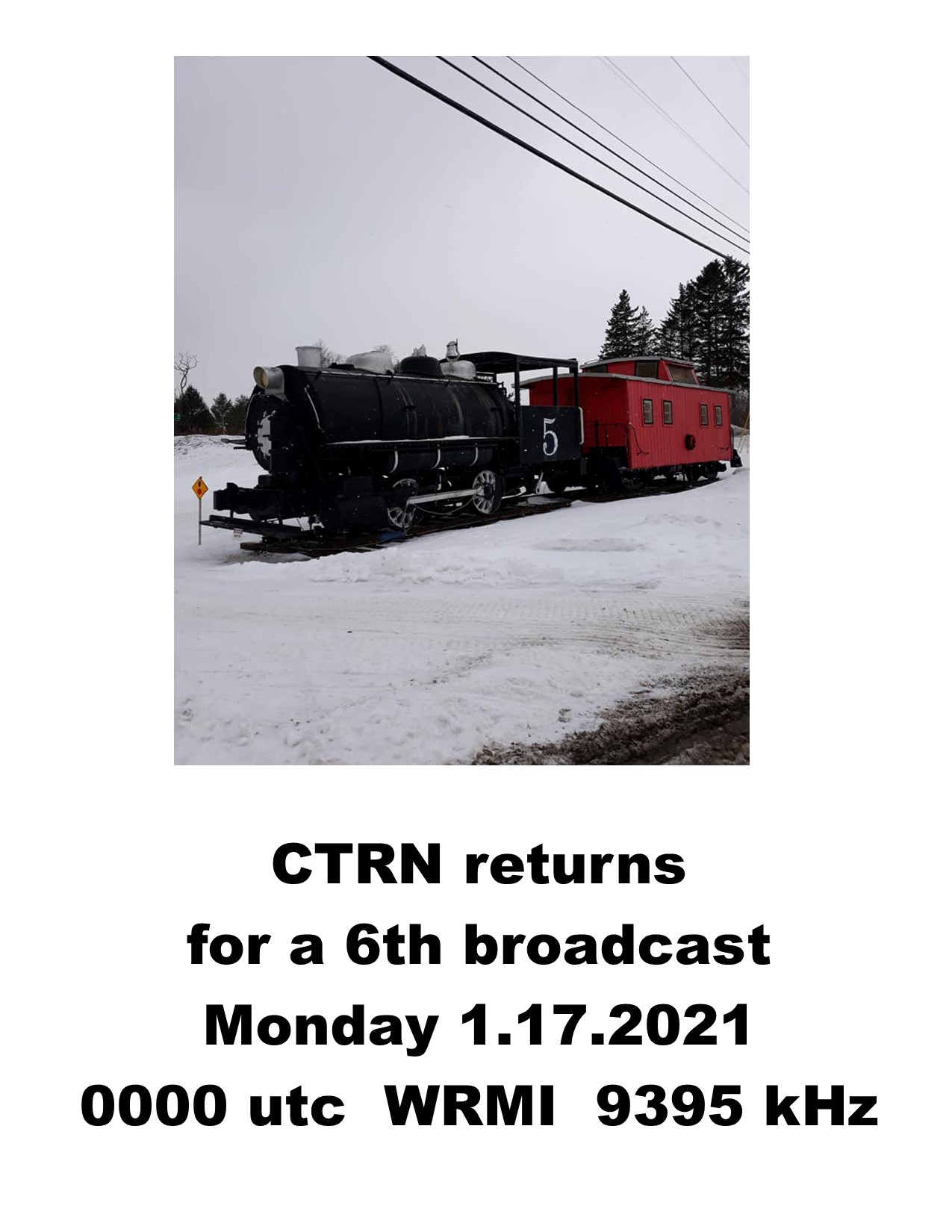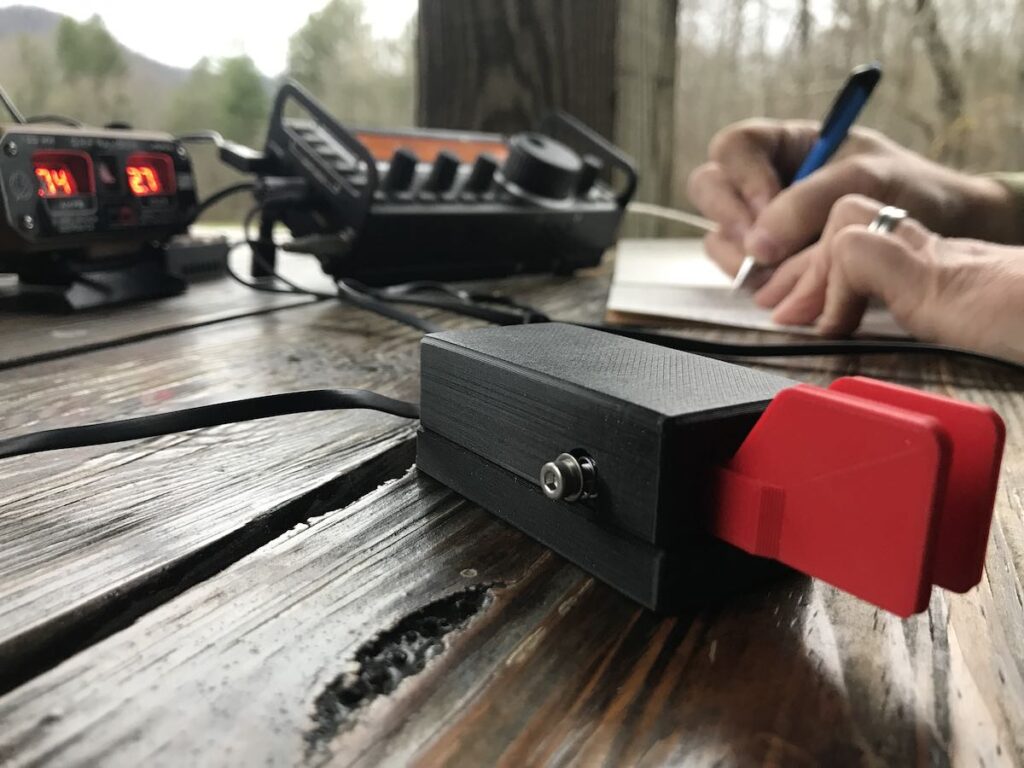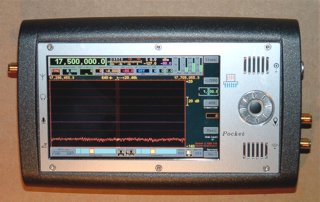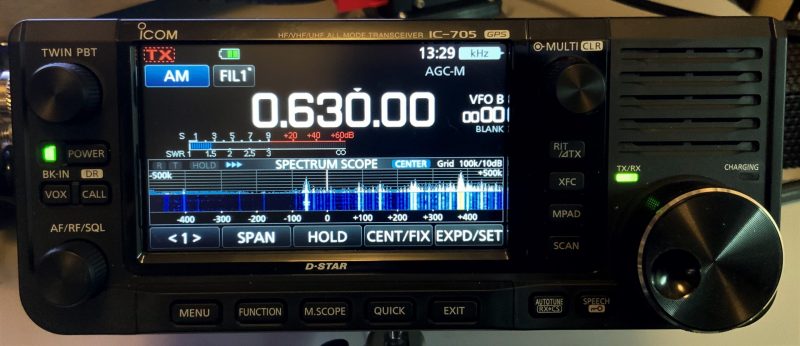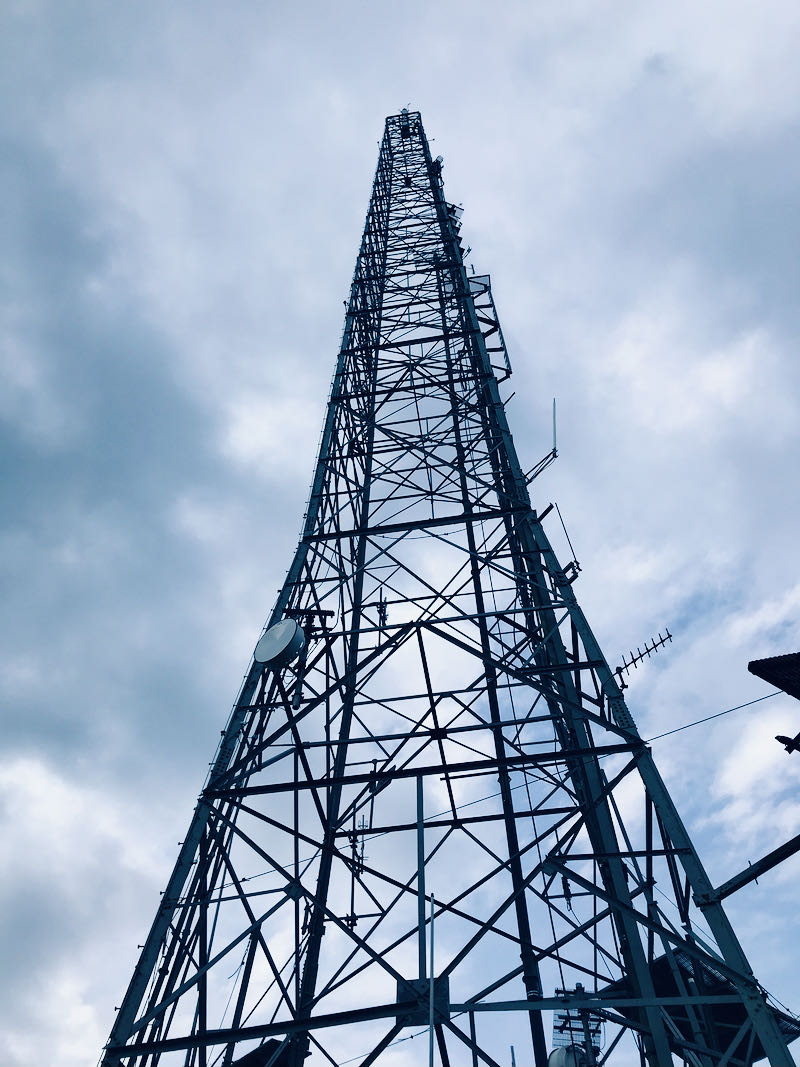Many thanks to SWLing Post contributor, Fastradioburst23, who shares the flier above and notes that CTRN will return for a 6th broadcast on January 17, 2022 (yes, the flyer has the incorrect year) at 00:00 UTC via WRMI on 9395 kHz.
Radio Waves: Radio Atlantique, Car Radio History, BBC Norfolk Features CW, and IC-R30 Firmware Update
Radio Waves: Stories Making Waves in the World of Radio
Because I keep my ear to the waves, as well as receive many tips from others who do the same, I find myself privy to radio-related stories that might interest SWLing Post readers. To that end: Welcome to the SWLing Post’s Radio Waves, a collection of links to interesting stories making waves in the world of radio. Enjoy!
Many thanks to SWLing Post contributors Trevor, Dennis Dura, and Markku Koskinen for the following tips:
Radio Atlantique Broadcasts Against All Odds (Red Tech)
Its broadcasting territory is restricted and unlikely to grow significantly, and for good reason. Since 1982, Radio Atlantique has been broadcasting in the heart of the French overseas territory of Saint-Pierre-et-Miquelon, a 252 square kilometers, self-governing Atlantic clump of islands just off the south coast of the Canadian province of Newfoundland. The radio station has cultivated its uniqueness, becoming a key partner in the local life and cohesion of the 6,000 or so Miquelonnais. However, this state of mind has not prevented the project from going through difficult times and bringing uncertainties to its future.
Broadcasting in the territory of Saint-Pierre-et-Miquelon is an extraordinary adventure every day. For example, coverage of the entire archipelago was only concluded in 2010 with effective broadcasting in Miquelon, only 18 nautical miles away from the main island. This challenge for the station has only reinforced its unique place within the islands’ society. The population on the islands is highly mixed, and the vast majority of the inhabitants have French and Basque origins. [Continue reading…]
The history of car radios, from AM to Apple (The Globe and Mail)
“Hey, Google. Play Toosie Slide by Drake.”
Within seconds, the Toronto pop singer’s silky voice wafts from the speakers of the ELS Studio audio system of my Acura MDX. Ten speakers in the cabin pump out trilling highs and chest-thumping bass, transforming my vehicle into a soothing audio studio on wheels. Bored, I flip over to SiriusXM for a little Hip-Hop Nation.
Modern car audio systems are so highly evolved, so seamless and so intuitive, it’s easy to forget that it wasn’t always this way. But it’s been 90 years since the first mass-produced car radio appeared, and the road to audio perfection has been a bumpy one indeed.
Michael Lamm remembers. At 84, the California-based auto historian’s car-ownership experience spans back to the early 1950s, when staticky car radios were powered by primitive vacuum tubes.
When he was growing up in Texas, he says he “didn’t really care that much about radio,” in part because programming was so limited. “I didn’t listen to the preachers who were constantly haranguing everybody.” [Continue reading…]
BBC Norfolk features ham radio Morse code (Southgate ARC)
January 11 was Learn your Name in Morse Code Day and Roger Cooke G3LDI was interviewed on BBC Norfolk by Chris Goreham about Morse
Roger has been a keen proponent of the advantages of Morse code since he started teaching it as a teenager when he was first licenced in 1956.
You can listen to the interview by fast-forwarding to 1:54:27 in this recording
https://www.bbc.co.uk/sounds/play/p0bcktml
Free Morse training courses are available Online, see
New Icom IC-R30 Firmware Update (via Markku Koskinen)
Updated Icom IC-R30 firmware has been posted on the Icom Japan web site.
Battery health status (Normal/Caution/Warning) judgment has been improved.
Click here to check it out and download at Icom Japan.
Do you enjoy the SWLing Post?
Please consider supporting us via Patreon or our Coffee Fund!
Your support makes articles like this one possible. Thank you!
Carlos’ Shortwave Art and Recording of the Voice of Korea (12 Jan 2022)
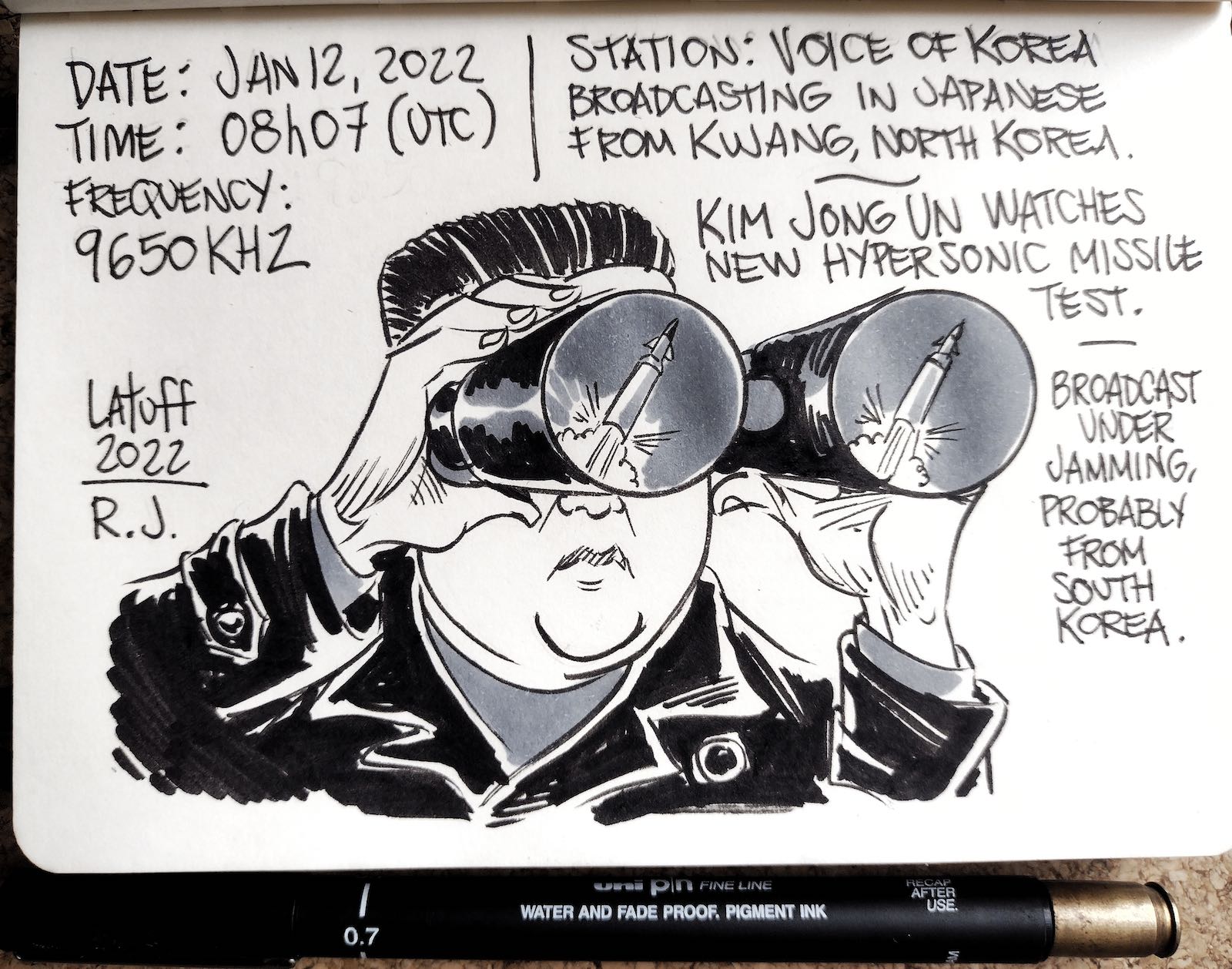 Many thanks to SWLing Post contributor and noted political cartoonist, Carlos Latuff, who shares yet another example of his radio log art, this time for The Voice of Korea.
Many thanks to SWLing Post contributor and noted political cartoonist, Carlos Latuff, who shares yet another example of his radio log art, this time for The Voice of Korea.
Carlos notes:
Voice of Korea, 9650 kHz, broadcasting in Japanese from Kujang, North Korea.
Newsletter: Kim Jong Un watches test of new hypersonic ballistic missile.
Transmission with jamming, probably from South Korea.
Signal captured in Rio de Janeiro, 01/12/2022, 05:07, local time.
Uli asks: “How well does the Icom IC-705 receiver work on longwave?”
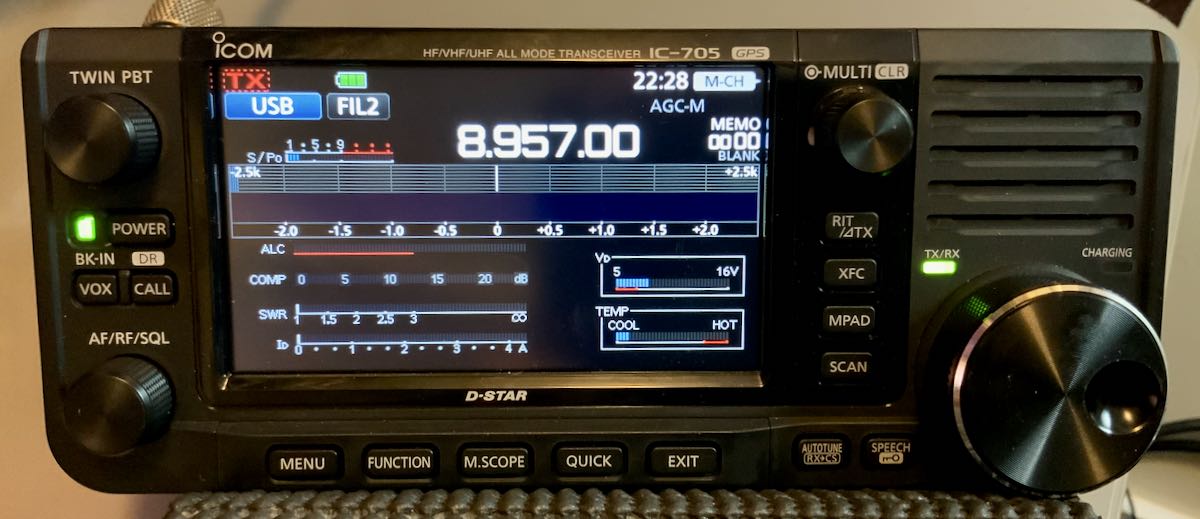 Many thanks to SWLing Post contributor, Uli (DB1ULI), who writes:
Many thanks to SWLing Post contributor, Uli (DB1ULI), who writes:
Hello Thomas,
I started to enjoy BCL and SWL some week ago (again). I have a HAM license for many years, but was QRT for the past few years. Now, the HAM bug bit somehow again and I’ve been listening to the bands via a Tecsun H-501 but changed this one to a Reuter Pocket already.
The Pocket is a really great receiver including also the FM Bands and the popular (in Europe) Digital Broadcasting DAB.
Still, it is just a receiver. So for now I am searching for a new rig, too. The current offerings are all tempting, FT-DX 10, FT-991A, IC-7300, IC-705 and so on. I really like the new models due to their features, and most due to their displays. My former rig was a Yaesu FT-897.
I already read your and the other reviews of the IC-705 (especially the BC receiving parts) and it could replace the Reuter in many ways. I am just a little bit reluctant because I like the longwave band a lot (we still have stations here) and there is no info to find anywhere how it works below 500kHz. MW seems to be on par with most other receivers.
Do you have an idea about a source of information concerning the capabilities of the IC-705 below 500kHz?
All the best and 73,
Uli
Great question, Uli. I’m hoping that some of our European IC-705 owners may be able to help you here. Although I’ve spent a lot of time on mediumwave with the IC-705, I’ve done little exploring of longwave.
Please comment if you have thoughts on the IC-705’s longwave performance!
FTIOM & UBMP, January 16-22
From the Isle of Music, January 16-22 2022:
This week we present some recent releases.
The broadcasts take place:
1. For Eastern Europe but audible well beyond the target area in most of the Eastern Hemisphere (including parts of East Asia and Oceania) with 100Kw, Sunday 1500-1600 UTC on SpaceLine, 9400 KHz, from Sofia, Bulgaria (1800-1900 MSK)
2. For the Americas and parts of Europe, Tuesday 0100-0200 UTC on WBCQ, 7490 kHz from Monticello, ME, USA (Monday 8-9PM EST in the US).
3 & 4. For Europe and sometimes beyond, Tuesday 1900-2000 UTC and Saturday 1300-1400 UTC (NEW FOR B21) on Channel 292, 6070 kHz from Rohrbach, Germany.
Our Facebook page is https://www.facebook.com/fromtheisleofmusic/
Our V-Kontakte page is https://vk.com/fromtheisleofmusic
Our Patreon page is https://www.patreon.com/tilford
Uncle Bill’s Melting Pot, January 16-22, 2022:
Episode 251 presents The Hoosier Effect, which celebrates the role of musicians from Indiana in several musical genres.
The transmissions take place:
1.Sunday 2300-0000 (6:00PM -7:00PM EST) on WBCQ The Planet 7490 kHz from the US to the Americas and parts of Europe
2. Tuesday 2000-2100 UTC on Channel 292, 6070 kHz from Rohrbach, Germany for Europe.
3. Saturday 0800-0900 UTC on Channel 292, 9670 kHz from Rohrbach, Germany for Europe with a directional booster aimed eastward.
Our Facebook page is https://www.facebook.com/UncleBillsMeltingPot/
Our V-Kontakte page is https://vk.com/fromtheisleofmusic
Our Patreon page is https://www.patreon.com/tilford
Radio Waves: The Barbed Wire Comms Line, FCC Denies AM Appeal, Raspberry Pi Radio Astronomy, and Interview with Dick Smith
Radio Waves: Stories Making Waves in the World of Radio
Because I keep my ear to the waves, as well as receive many tips from others who do the same, I find myself privy to radio-related stories that might interest SWLing Post readers. To that end: Welcome to the SWLing Post’s Radio Waves, a collection of links to interesting stories making waves in the world of radio. Enjoy!
Many thanks to SWLing Post contributors Paul, Dennis Dura, Dan Van Hoy, Alokesh Gupta, and the Southgate ARC for the following tips:
Atrocious but efficient: How ranchers used barbed wire to make phone calls (Texas Standard)
A barbed wire telephone call didn’t sound great but could quickly warn others about something such as a wildfire.
Historian J. Evetts Haley wrote that, in its time, the old XIT Ranch up in the Texas Panhandle was “probably the largest fenced range in the world.” He recalled that its barbed wire enclosed over 3 million acres of land. At the north end alone, the fence ran for 162 miles. The unique enclosure helped keep in enormous cattle herds, keep out rustlers, and also gave rise to the creative use of a new technology: the telephone.
I’ll come back to the XIT in a moment, but first, consider these smattering of reports from that era. In 1897, The Electrical Review, reported that “on a ranch in California, telephone communication had been established between the various camps . . . by means of barbed wire fences.” The article says the novel use of the phone was a great success and was being used in Texas as well. That same year, the New England Journal of Agriculture was impressed that two Kansas farmers, living a mile apart, had attached fine telephone instruments to the barbed wire fence that connects their places and established easy communication. From the Butte Intermountain in 1902 we see this notice: “Fort Benton’s latest development is a barbed wire telephone communication.” The article points out that people of the range were not all that happy with barbed wire, which they thought was an “evil” that had arrived with the railroad, but they had decided to look at the practical side of its existence and use it to create a telephone exchange that would connect all the ranches to Fort Benton. [Continue reading…]
FCC Says No to Appeal for a New AM in L.A. (Radio World)
Schwab Multimedia has lost an appeal to the Federal Communications Commission in a case involving a planned AM station near Los Angeles for which it had a construction permit.
This is a “tolling” case, one that involves the FCC construction clock. The history is complex — the FCC’s summary is 2,500 words long, not counting many extended footnotes — but the upshot is that KWIF in Culver City was never built and, barring further developments, apparently will not be. Its call sign has now been deleted.
Levine/Schwab Partnership, which does business as Schwab Multimedia, had applied in 2004 to build a new AM station in the Los Angeles area. It eventually secured a CP in 2016 for the station at 1500 kHz. [Continue reading at Radio World…]
Radio Astronomy with Raspberry Operating System (Glen Langston)
Check out this fascinating radio astronomy project by Glen Langston that is not only affordable, but quite accessible. Thank you for the tip, Paul!
This article is in PDF form and can be downloaded from with this link.
Dick Smith Live: Adventuring, Electronics & Amateur Radio (Ham Radio DX on YouTube)
Dick Smith, VK2DIK has lived an adventurous and extraordinary life. He is a proud Australian, businessman, adventurer, entrepreneur and he single handedly changed electronics and CB/Amateur Radio in Australia.
Dick has recently released his autobiography titled, Dick Smith: My Adventurous Life and tonight we’re privileged to sit down live with Dick, speaking to him about his adventures, including the first solo helicopter flight around the world, his business ventures and being a pioneer for Amateur and CB radio.
Do you enjoy the SWLing Post?
Please consider supporting us via Patreon or our Coffee Fund!
Your support makes articles like this one possible. Thank you!
Frugal Radio’s Loop On Ground (LoG) Antenna
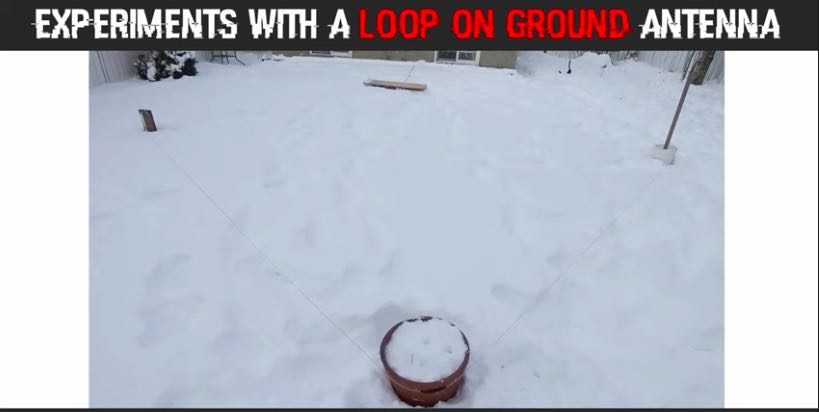 Many thanks to SWLing Post contributor Rob, with Frugal Radio, who writes:
Many thanks to SWLing Post contributor Rob, with Frugal Radio, who writes:
On New Year’s Day I decided to spend some time make a Loop on the Ground HF antenna. It had been a project I had wanted to undertake for a while, after seeing the KK5JY web site.
The LoG is supposed to work fairly well in noisy RF environments, and with my house being in suburbia,I thought it would be worth a shot.
I use some old speaker wire, RG6, some connectors I had lying around, and some random items from the back yard (old tyre, flower pot etc). It only took about 30 minutes to build with the stuff I already had lying around. I used a NooElec balun as my transformer.
Despite the snow on the ground, it all worked.
I made a video showing the construction and initial testing which your readers may enjoy.
As you mention, Rob, the LoG has become a very popular antenna for folks living in an urban RFI jungle. Paired with a nice high dynamic range SDR, the results are quite impressive and the noise floor much lower than it would be with a traditional wire antenna or even a sky loop. I am curious how it compares with any other antennas as your home. Thanks for sharing!

